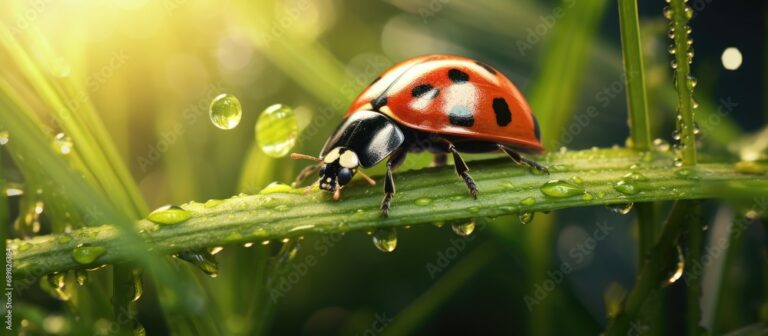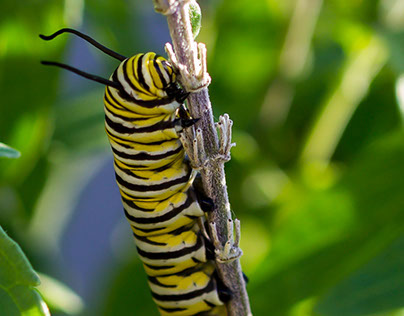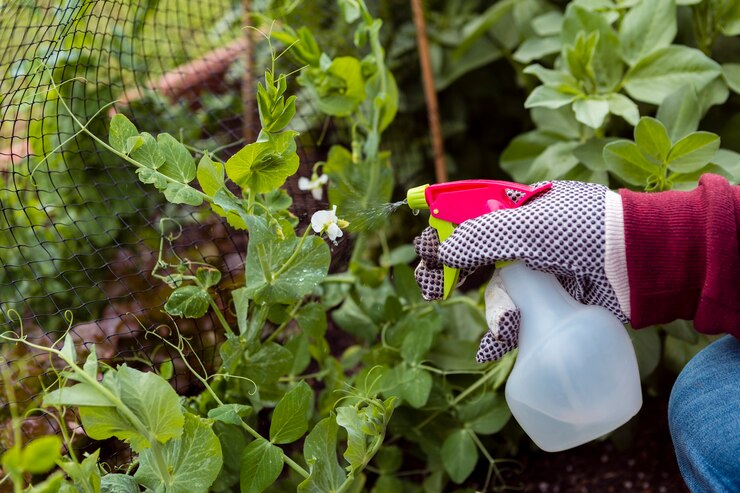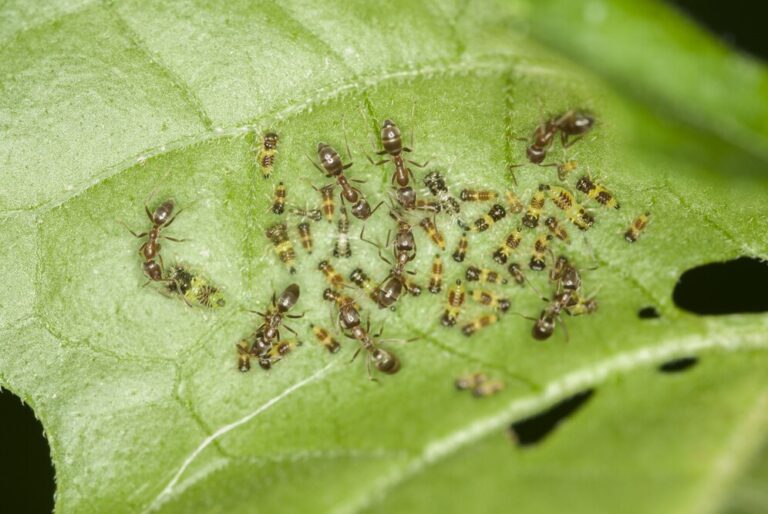Sulfur for Pest Control: How to Use This Natural and Effective Remedy for Your Plants
Table of Contents
The Science Behind Sulfur’s Effectiveness: Dive into the scientific principles that make sulfur an effective pest control agent, and grasp its impact on different types of pests.

Sulfur has long been recognized as a powerful and effective pest control agent, thanks to its unique scientific properties. One of the key reasons behind its effectiveness lies in its ability to inhibit the growth and development of pests. Sulfur works by interfering with the pests’ ability to metabolize and reproduce, ultimately leading to their demise.
What makes sulfur even more remarkable is its broad spectrum of impact on different types of pests. From mites and aphids to fungi and bacteria, sulfur has shown exceptional control over a wide range of pests that can wreak havoc on plants. Its effectiveness is particularly notable in the realm of fungal diseases, where sulfur demonstrates its ability to disrupt the life cycles of various fungi and prevent their spread.
Research has shown that sulfur’s effectiveness is not limited to its direct impact on pests, but also extends to its ability to enhance the plant’s natural defense mechanisms. It stimulates the production of certain compounds within the plant, such as phytoalexins, which act as natural defense agents against pests. By boosting the plant’s immune system, sulfur creates a hostile environment for pests, making it an invaluable tool for sustainable pest management.
In conclusion, the science behind sulfur’s effectiveness as a pest control agent is rooted in its ability to inhibit pest growth and disrupt their life cycles. Its broad spectrum of impact on different types of pests, coupled with its ability to enhance plant defense mechanisms, make sulfur a valuable tool for gardeners and farmers alike. The next sections will further explore the selection, application, and precautions associated with using sulfur for pest control.
Selecting the Right Sulfur Products: Explore the different sulfur products available in the market and gain insights on choosing the most suitable one for your specific pest control needs.
When it comes to selecting the right sulfur products for your pest control needs, it’s important to consider several factors. First, assess the type of pests you are dealing with. Different sulfur products may be more effective against specific pests, so knowing your target pest is crucial in choosing the right product.
Next, consider the formulation of sulfur products. Sulfur can be found in various forms such as wettable powders, dusts, or liquids. Each formulation has its own advantages and may be more suitable for different application methods. For instance, wettable powders are often mixed with water and sprayed onto plants, while dusts are applied by directly dusting the affected areas. Assessing your preferred application method will help narrow down your options.
It’s also worth noting that sulfur products may have different concentrations of active ingredients. Higher concentrations may be more effective against tougher pests, but they may also have more potential side effects. Consider the severity of the infestation and the specific needs of your plants when choosing the concentration of sulfur products.
Lastly, be sure to read product labels and follow the recommended application rates and safety precautions. This will ensure that you are using the sulfur products correctly and safeguarding the health of your plants. Consulting with a gardening professional or seeking advice from reputable sources can also help guide you in selecting the most suitable sulfur products for your specific pest control needs.
Application Techniques: Discover the various methods of applying Sulfur for Pest to your plants, such as dusting, spraying, or using sulfur-based products, to ensure optimal Sulfur for Pest Control results.

Applying sulfur to your plants offers a variety of effective pest control methods to ensure the health and well-being of your garden. One popular technique is dusting, where a fine layer of powdered sulfur is evenly spread over the plants. This method creates a barrier that repels pests and prevents them from causing damage. Dusting is particularly effective for controlling mites, aphids, and other small insects that can affect the foliage of your plants.
Another method is spraying, which involves diluting liquid sulfur with water and applying it to the plants using a sprayer. This technique allows for a more targeted application, ensuring that the sulfur reaches the affected areas. Spraying is commonly used for larger pests, such as caterpillars and beetles, as well as for diseases like powdery mildew. It is important to follow the instructions provided by the sulfur product manufacturer to ensure the correct dilution ratio and application technique for optimal results.
In addition to dusting and spraying, there are sulfur-based products available in the market that offer convenience and ease of use. These products, including dusting sulfur in ready-to-use shakers and sulfur solution concentrates, provide an alternative application method for those who prefer a more straightforward approach. The use of sulfur-based products can help control pests such as spider mites, rust mites, and thrips, while also offering the benefits of convenience and ease of application.
As a responsible gardener, it is essential to understand the different application techniques and choose the one that best suits your specific pest control needs. Whether you prefer dusting, spraying, or using sulfur-based products, each method has its advantages and can effectively protect your plants from unwanted pests. Experimenting with these techniques and observing the results will help you determine the most effective approach for your garden. When applying sulfur, always follow the instructions provided by the product manufacturer to ensure the best possible outcome for your plants and the environment.
Here’s a table with information about using Sulfur for Pest control in gardening:
| Aspect | Details |
|---|---|
| Sulfur Formulations | – Dusting Sulfur: Fine powder applied directly to plants. – Wettable Sulfur: Sulfur mixed with a wetting agent for spray applications. |
| Mode of Action | Sulfur acts as a fungicide and insecticide. It disrupts the cell membranes of pests and interferes with their respiratory processes. |
| Target Pests | – Fungus Gnats: Sulfur can help control larvae in the soil. – Spider Mites: Effective against mites on the foliage. – Powdery Mildew: Used for controlling this fungal disease. |
| Application Timing | Apply sulfur at the first sign of pest infestation or disease symptoms. Regular applications may be necessary for ongoing control. |
| Compatibility | – Check compatibility with other pesticides or fertilizers before mixing. – Avoid using sulfur in conjunction with oil-based sprays. |
| Safety Precautions | – Wear protective gear (gloves, goggles, mask) when handling sulfur. – Apply when the air is calm to prevent drift. |
| Application Methods | – Dusting: Sprinkle dusting sulfur on plant surfaces. – Spraying: Mix wettable sulfur with water and apply as a spray. |
| Coverage | Ensure thorough coverage, especially on the undersides of leaves where pests may hide. |
| Frequency of Application | Follow the product label instructions for recommended application intervals. It may vary depending on the target pest and the severity of the infestation. |
| Temperature Considerations | Avoid applying sulfur during extreme temperatures, as it may cause phytotoxicity, especially in hot weather. |
| Residual Effects | Sulfur may leave a residue on plant surfaces, so consider the harvest interval specified on the product label. |
| Integrated Pest Management (IPM) | Incorporate sulfur as part of a comprehensive IPM strategy, combining cultural, biological, and chemical control methods. |
| Plant Sensitivity | Some plants, particularly certain fruit trees and vines, may be sensitive to sulfur. Perform a small test application before widespread use. |
| Organic Gardening | Sulfur is approved for use in organic gardening, but always check with certifying bodies for compliance. |
| Product Availability | Dusting sulfur and wettable sulfur formulations are widely available at garden centers and online. |
| Learning Resources | Consult product labels, gardening guides, and reputable sources for specific recommendations on using sulfur for pest control. |
This table provides an overview of using sulfur for pest control in gardening, covering aspects such as application methods, safety precautions, compatibility, and its effectiveness against specific pests. Always follow the product label instructions for the most accurate and safe application.
Timing and Frequency of Sulfur for Pest Application: Understand the importance of timing and frequency when applying sulfur to maximize its effectiveness and protect your plants from pests.
When it comes to applying sulfur for pest control in your garden, timing and frequency play crucial roles in maximizing its effectiveness and safeguarding your plants. Sulfur should ideally be applied before pests become a problem as a preventative measure. Certain pests may have specific times of the year when they are most active, and this can guide you in determining the optimal timing for sulfur application. For example, in regions where powdery mildew is prevalent, sulfur should be applied in late spring or early summer when the conditions are favorable for its development.
In addition to timing, the frequency of sulfur application is another important aspect to consider. This will largely depend on the severity of the pest infestation and the specific sulfur product being used. Generally, a regular application every 7-14 days is recommended to ensure continued protection against pests. However, it’s important to follow the instructions provided by the manufacturer for the particular sulfur product you are using, as some may have specific guidelines for application frequency. By adhering to the recommended timing and frequency, you can create an environment that is inhospitable to pests while safeguarding the health of your plants.
Precautions and Safety Measures: Learn about the necessary precautions to consider when using sulfur for pest control, ensuring the safety of both your plants and yourself.

Precautions and Safety Measures: When using sulfur for pest control, it is essential to consider several precautions to ensure the safety of both your plants and yourself. Sulfur can be an effective tool in managing pests, but it is important to handle and apply it correctly to avoid any potential harm.
First and foremost, always follow the instructions provided by the manufacturer when using sulfur-based products. These instructions will guide you on the appropriate dosage, application method, and safety precautions. Remember that exceeding the recommended dosage can have adverse effects on your plants and may even harm beneficial organisms in your garden.
Additionally, it is crucial to use personal protective equipment (PPE) when handling and applying sulfur. This includes wearing gloves, long-sleeved clothing, and protective eyewear to prevent direct contact with the skin, eyes, and respiratory system. Take extra care not to inhale sulfur dust or fumes as they can irritate the lungs and cause respiratory discomfort. By taking these necessary precautions, you can effectively utilize sulfur for pest control while minimizing any risks to yourself and your plants.
Can Sulfur for Pest be harmful to my plants?
While sulfur can be effective for pest control, it should be used with caution as it can cause damage to certain plant species. It is important to research and ensure that the plants you intend to treat are not sensitive to sulfur.
Can sulfur be used on all types of Sulfur for Pest?
Sulfur is most effective against certain types of pests such as fungi, mites, and insects. It may not be as effective against other pest species. It is advisable to identify the specific pest you are dealing with and research if sulfur is an appropriate control option for that pest.
How often should sulfur be applied to plants Sulfur for Pest control?
The frequency of sulfur application depends on the severity of the pest infestation and the specific product being used. It is generally recommended to follow the instructions provided by the manufacturer or consult with a professional for guidance on the appropriate timing and frequency of sulfur application.
Can sulfur be used in organic gardening?
Yes, sulfur is commonly used in organic gardening as a pest control method. However, it is important to ensure that the sulfur product being used is approved for organic use and follows the guidelines set by organic certification programs.
Is there a specific time of day when sulfur should be applied?
It is generally recommended to apply sulfur in the early morning or late evening when temperatures are cooler. This helps to minimize the risk of plant burn or damage. However, it is important to check the instructions provided by the manufacturer for any specific recommendations regarding the timing of sulfur application.
Can sulfur be harmful to humans?
Sulfur can cause skin and eye irritation in humans, especially if it comes into direct contact. It is important to take proper precautions such as wearing protective clothing, gloves, and goggles when handling sulfur products. It is also recommended to avoid inhaling sulfur dust or fumes.
Can sulfur be used on edible crops?
Sulfur is commonly used on various edible crops to control pests. However, it is important to adhere to the recommended application rates and follow any specific guidelines provided by regulatory bodies to ensure the safety and quality of the crops.
Can sulfur be used in conjunction with other pest control methods?
Yes, sulfur can be used in combination with other pest control methods, such as biological controls or integrated pest management (IPM) strategies. It is important to consider the compatibility and potential interactions between sulfur and other pest control agents to avoid any adverse effects on plants or the environment.







